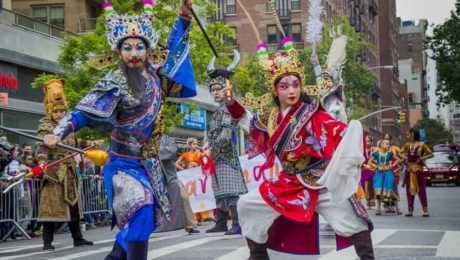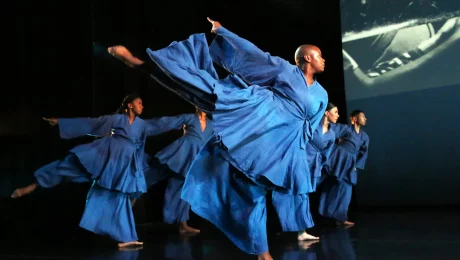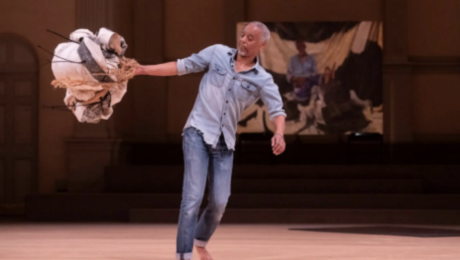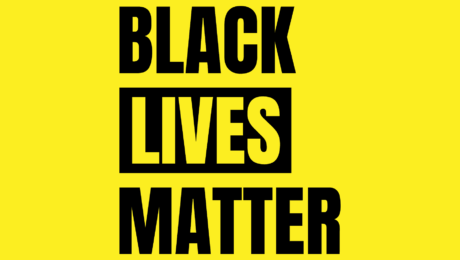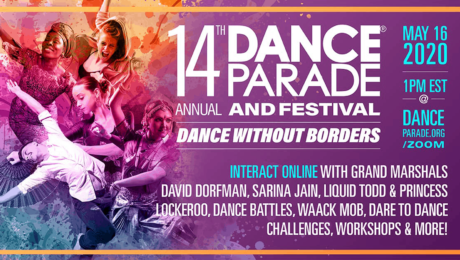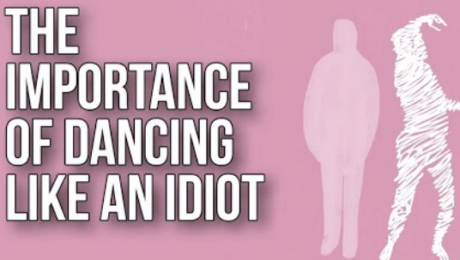Our 2024 Year-End Campaign offers Donor Perks and a 2:1 match!
#GIVINGTUESDAY KICKS OFF TO CELEBRATE OUR 2024 THEME, “DANCE FREE”
 Alternativamente, haga el cheque a nombre de “Dance Parade” y envíelo por correo a:
Alternativamente, haga el cheque a nombre de “Dance Parade” y envíelo por correo a:
455 FDR Drive, Suite B104, New York, NY 10002
¡Muchas gracias por su apoyo!
DETALLES DE LA CAMPAÑA:
Dance Parade is pleased to create this 2023 Year-End campaign to raise critical funds for dance education. Beginning Tuesday November 28, 2023 nuestra campaña busca recaudar fondos para permitir que los artistas docentes lleven el don de la danza a más de dos docenas de escuelas y centros comunitarios. Creemos que la danza puede despertar el espíritu humano y ayudar a crear una sociedad más vibrante y equitativa.
Our Board of Directors have generously committed to doubling every dollar donated, expanding what we can do as a community that loves dance.
BAILANDO POR NUEVA YORK: Esta temporada, nuestra campaña de $20,000 ayudará a Dance Parade a crear programas educativos de baile de 10 semanas que beneficiarán a más de 1,500 participantes en escuelas y centros comunitarios.

- NYC iSchool (9th Grade) Chelsea, Manhattan
- PS. 347, School of Humanities (Middle School), Bushwick, Brooklyn
- PS. 86K The Irvington Elementary School, Brooklyn
- PS. X114 Luis Llorens Torres School Elementary School, Bronx
- PS. 112Q Dutch Kills Elementary School, Queens
- International Charter School of New York (Middle School), Brooklyn
- PS. 56, The Lewis Latimer Elementary School, Brooklyn
- Fort Hamilton Senior Recreation Center, Brooklyn
- PS. X537 Bronx Arena High School, Bronx
- PS 023 the New Children’s School (Elementary), Bronx
- University Neighborhood High School, LES, Manhattan
- PS. 34 Franklin D Roosevelt School, East Village, Manhattan
- Ft Greene Park, Brooklyn
- Virtual Classes in Spanish, Mandarin Chinese and Japanese
Gran final aparecido en el escenario. ¡Terminará sus programas con la participación en el 17º Desfile Anual de Danza el sábado 20 de mayo de 2023 y luego exhibirá su trabajo en el escenario en DanceFest después del desfile! Para muchos, esta será una experiencia única en la vida, ya que la mayoría de estos niños nunca han aparecido en el escenario.
DANCE FREE NYC: Our 2024 theme, “Dance Free NYC” is not just a catchy phrase but a powerful rallying cry that encapsulates the very essence of freedom of expression and inclusivity in the world of dance. This theme serves as a unifying force and a call to action for the dance advocacy community, especially in the face of potential legislative changes that could restrict dance once again. Here’s how “Dance Free” will serve us:
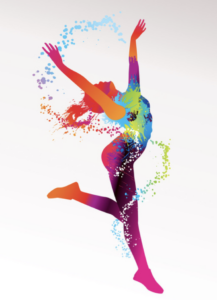 Freedom of Expression: “Dance Free” embodies the fundamental principle of the First Amendment, which guarantees the right to freedom of expression. By embracing this theme, the dance community asserts its commitment to this constitutional right, reminding the city and its policymakers of the importance of artistic expression.
Freedom of Expression: “Dance Free” embodies the fundamental principle of the First Amendment, which guarantees the right to freedom of expression. By embracing this theme, the dance community asserts its commitment to this constitutional right, reminding the city and its policymakers of the importance of artistic expression.- Historical Context: The theme acknowledges the historical context in which it’s rooted, particularly how Dance Parade was founded in 2007 as a protest to the the 1926 Cabaret Law, which disproportionately affected marginalized communities, especially Black, Indigenous, LGBT and People of Color. By recalling this dark period in New York City’s history, “Dance Free” reminds us of the need to rectify past injustices and strive for greater inclusivity and equity in the dance scene.
- Unity and Advocacy: “Dance Free” can serve as a unifying banner under which the dance community, its advocates, and allies can rally together. It brings people from diverse backgrounds and dance styles together in a common cause: safeguarding the freedom to express themselves through dance. It’s a reminder that the dance community stands strong and united against any potential restrictions such as the controversial land-use reforms that the Adams adminstration is proposing.
- Educational Tool: The theme is an educational tool, both for those within the dance community and the wider public. It will be used to raise awareness about the historical significance of dance restrictions, the value of cultural divdance, and the importance of an inclusive and vibrant dance culture in New York City.
- Advocating for Inclusivity: “Dance Free” extends beyond just celebrating freedom of expression. It is a statement against any potential rollback of the NYC Department of Planning’s proposal to restrict dance in smaller venues. It signals that the dance community will actively advocate for an inclusive and welcoming environment for dance in all spaces, regardless of their size or patronage.
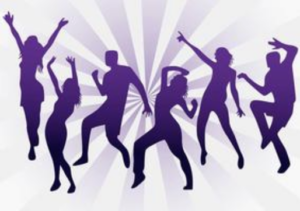
- Engaging the Public: “Dance Free” will capture the attention and support of the broader public, not just the dance community. By framing the issue as a matter of freedom of expression, it can encourage more people to become involved in advocating for a vibrant dance culture in the city, ensuring that the City Council’s decisions align with the principles of inclusivity and freedom.
- Positive Vision: “Dance Free” also represents a positive vision for the future. It’s not just about resisting potential restrictions but about creating an environment where dance is celebrated, nurtured, and accessible to all. It’s a call for the city to embrace the power of dance as a form of expression, celebration, and cultural exchange.
In summary, “Dance Free” is a theme that goes beyond mere words on a banner; it’s a potent symbol of freedom, inclusivity, and unity within the dance community. It will inspire and mobilize dancers and advocates to ensure that New York City’s legislative decisions align with the values of freedom, inclusivity, and respect for diverse forms of expression through dance.
SUS VENTAJAS COMO DONANTE: El 100% de su contribución irá a los artistas y significa mucho para nosotros y estamos agradecidos por cada donación, ¡no importa cuán pequeña sea!
FRIEND: $50+ Los donantes reciben una carta de recibo de exención de impuestos para deducir sus donaciones de sus impuestos.
MOVER & SHAKRE: $100Las donantes reciben lo anterior Y una conmemorativa Dance Free refrigerado imán Patrocine una Organización de Danza de su elección en el 17th Annual Dance Parade May 18, 2024
STAR: $150+ Los donantes reciben todo lo anterior Y un personalizado Dance Free Taza de café y entrada a la tribuna de Dance Parade Dance Parade’s Grandstand
ANGEL: $250+ Los donantes reciben todo lo anterior yuna camiseta de “Dance Free” Tshirt, Admisión de cortesía a todos los eventos de Dance Parade: fiesta de lanzamiento, tribuna y fiesta posterior y patrocinará un taller de diversidad en una escuela pública de la ciudad de Nueva York
¡Muchas gracias por su apoyo!
Equipo Dance Parade
- Publicado en Apoyo
DISCUSION de la importancia de la DANZA
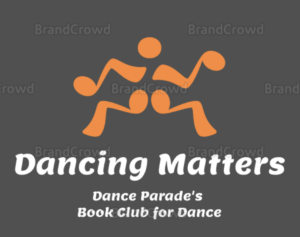
Dancing DISCUSION de la importancia de la DANZA unirá a la gente en una diversa reunion de grupo de actuaciones de baile y experiencias en una discusión abierta y honesta compartida en público y en línea. Inspirado y parcialmente modelado en el Peformance Club fundado y dirigido durante varios años por la escritora Claudia LaRocco, El baile importa invita a aficionados, profesionales de la danza y entusiastas por igual a unirse a la aventura de buscar bailes dignos de consideración crítica y apoyo en el área metropolitana de la ciudad de Nueva York.
Join the next Dancing Matters outing as we head to Lincoln Center on 9/11 to see former Dance Parade Grand Marshal Jacqulyn Buglisi’s Table of Silence Project. Over 100 dancers, opera singers and musicians choreographed in a way that reflects a prayer for peace. Get FREE TICKETS for the Monday 9/11 8am performance here and join the discussion afterwards!
- Publicado en 2023, Genre Buzz
EVIDENCIA de Ronald K. Brown en el Joyce!
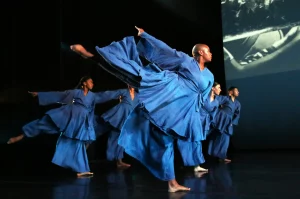
Todos habíamos presenciado pruebas
Dieciséis de nosotros cruzamos la calle hasta el restaurante chino en la víspera del año del conejo de agua, 4720, en China, 14 husos horarios por delante de nosotros. Según las noticias oficiales del estado chino, la tradición de Xinhu señala al conejo como el más afortunado de los 12 animales del zodíaco, que representa la paz y la longevidad. Kimmy Yam afirma que también evoca el poder de la empatía. En Vietnam, el mismo día marca la víspera del año, un tótem caracterizado por ser tranquilo, realista, inteligente y artístico. Estas siete cualidades acababan de exhibirse en el escenario del Joyce Theatre en la 8th Avenue, claramente visibles a través de las ventanas del frente del restaurante que había permanecido abierto hasta tarde solo para nosotros.
Nos pusimos manos a la obra para ayudar a Nina, nuestra anfitriona, a reorganizar las mesas en un gran cuadrado irregular para acomodar a todos en el grupo en una sola plataforma a una distancia lo suficientemente fácil para hablar entre sí. Esto marcó la primera acción colaborativa que un equipo de Dancing Matters emprendió como comunidad. Como presagio de renovación y resiliencia que parecía hacer eco de lo que acabábamos de presenciar, un concierto compuesto por tres obras de Ronald K. Brown coronado con la aparición en el escenario del creador junto al Director Artístico Asociado Arcell Cabuag en la última reverencia del telón, el la naturaleza física de nuestra actividad comunitaria inicial es de buen augurio cualquiera que sea el calendario que consulte.
Dancing Matters tiene como objetivo crear, fomentar y promover una respuesta crítica democrática y colaborativa de todo el espectro amplio e inclusivo de comunidades relacionadas con la danza que Dance Parade y DanceFest manifiestan cada MAYO. El grupo en la mesa cuadrada incluía varios bailarines y coreógrafos profesionales actuales y anteriores, practicantes de la práctica de movimiento meditativo 5Ritmos fundada por la fallecida Gabrielle Roth, al menos un DJ profesional, un escritor creativo con experiencia en movimiento y otros cuya relación con el baile podría caracterizarse más inefablemente. Recorrimos la mesa persona por persona, cada uno ofreciendo algunas palabras que podrían compartir entre sí o con un ser querido como una forma de conjurar y resumir una reacción general a lo que acababan de experimentar
Nuestro DJ profesional fue el primero en comentar sobre las formidables contribuciones de los colaboradores de Brown en la música y el vestuario. El telón se había abierto en "Puerta Abierta" para comenzar el espectáculo, revelando a Andrew Antron sentado en el piano de media cola. La audiencia se fue con el resto de la banda de Arturo O'Farrill, Resist, compuesta por otros siete miembros de la Orquesta Afro Latin Jazz en una línea a lo largo. la parte trasera del escenario iluminada desde atrás en el ciclorama y en gran parte en silueta. La coreografía, originalmente encargada e interpretada por el Alvin Ailey American Dance Theatre en 2015, se estrenó en compañía con estas actuaciones en el Joyce y la presencia en vivo de este excelente conjunto junto con su nítido sonido polirítmico afrocubano sirvió como anticipo de la exquisita valores de producción que se aplicarían a lo largo de la noche.
Nuestro DJ no descuidó la música de Jason Moran que acompaña la oferta intermedia “The Equality of Night and Day”, que recibió su estreno en la ciudad de Nueva York con estas presentaciones de Joyce. Tampoco ignoró la suite de Duke Ellington, Roy Davis, Jr. y Fela Anikulapo Kuti para el eterno final favorito y del agrado de la multitud “Grace”, encargado, como “Open Door”, para la compañía Ailey (1999) y re- configurado para EVIDENCE en 2003. Cada partitura grabada provocó un diálogo igualmente fuerte con el baile y otros elementos del escenario.
Arcell Cabuag recibe reconocimiento como Coreógrafo Asociado por “Puerta Abierta”. Keiko Voltaire diseñó el vestuario de esta obra combinando el flujo imaginativo, si no el llamativo color, de los diseños de Omotayo Wunmi Olaiya para las otras dos obras. Excepto por los collages de fotos proyectados curados por Deb Willis para “The Equality…”, nadie en la mesa mencionó el excelente diseño de escenarios e iluminación y la dirección técnica de Tsubasa Kamei que sostuvieron durante toda la noche, ni el texto que lo acompaña que se escuchó en las grabaciones de la activista política y académica Angela Y. Davis. Mi descuido, me temo
He conocido y admirado a Ron Brown y su trabajo, a veces de cerca, ya que él, Dean Moss y yo presentamos duetos como coreógrafos/intérpretes hace décadas en un solo programa de la plataforma Fresh Tracks en Dance Theatre Workshop (DTW), que desde entonces se ha transformado en New York Live Arts. Sin embargo, este concierto me ofreció la primera oportunidad de producir ingerir de una sola vez tal panoplia de su enorme creatividad a lo largo de los años de una generación y considerar la importancia de su contribución al campo no solo en términos de su trabajo a lo largo del tiempo, sino también de su tutoría y desarrollo de una legión de voces fuertes entre los bailarines que han surgido en su compañía como Camille A. Brown, por sólo señalar uno.
Me pareció que la mente maestra de esta temporada hogareña dentro de los confines cálidos y amistosos de Joyce se interrogó en cada una de estas tres piezas, no solo con respecto a la individualidad, la comunidad y la justicia social como se manifiesta en el movimiento de su empresa y el contribuciones de sus colaboradores, sino entre la disciplina técnica, los tempos, el ritmo y los elementos compositivos que hacen que la danza hable, especialmente cuando se nutre de cuerpos provenientes de toda la diáspora africana y más allá.
Además del trabajo de Alvin Ailey y Camille A. Brown, entre quienes él representa un puente creativo, la coreografía también me recordó la de Garth Fagan tanto en su invención compositiva como en su deslumbrante despliegue de quietud. Dejaré que otros miembros de Dancing Matters complementen lo que deseen.
Bailarines de la compañía Ronald K. Brown/Evidence en “La igualdad de la noche y el día” en el Joyce Theatre de Nueva York.Credit…Andrea Mohin/The New York Times
Reseña: Una danza en busca de armonía en un mundo desigua
Por Gia Kurlas
Jan. 18, 2023
“La igualdad de la noche y el día”, un estreno en Nueva York del coreógrafo Ronald K. Brown y su compañía, Evidence, comienza esencialmente a mitad de un pensamiento. Una voz dice: "Y finalmente".
Es tan sensato que prácticamente suena como una oración completa. Hablado por la activista activist Angela Davis en un tono que raya en el cansancio, el “y finalmente” insta a la multitud, al menos a la que imaginan de pie frente a ella, a pensar en el panorama general, mientras habla de problemas que afligen a los Estados Unidos, como “el asalto contra la afirmación afirmativa”. acción” y “el creciente conservadurismo”.
La bailarina Joyce Edwards, una potencia sedosa llena de drama, ya sea aparentemente inmóvil u ondeando su cuerpo con fervor, está en el centro del escenario: se inclina hacia adelante y se levanta con las muñecas cruzadas hasta que sus brazos se levantan y se abren como alas gloriosas. La iluminación evoca el resplandor desvaído de una puesta de sol. Mientras los otros bailarines se reúnen a su alrededor, ella junta sus manos y escuchamos a Davis pedir que las personas que están delante de ella “piensen muy profundamente en lo que pueden hacer para marcar la diferencia”.
Los discursos de Davis se escuchan a lo largo de esta obra de 2022, interpretada en el Joyce Theatre, pero mejor es su chispeante partitura del pianista de jazz Jason Moran. La música comienza sobria y contenida, pero se construye gradualmente con una velocidad vertiginosa y retorcida para llegar, sónicamente, a la urgencia no solo de una, sino de múltiples generaciones que se han enfrentado a la opresión.
- Publicado en 2023, El baile importa
Involucrando a la audiencia: Enfoques del modelo Kinetic Light y Dean Moss
how do you welcome your audience?
“The actors never said hello to the audience,” theater director Anne Bogart quoted colleague Leon Ingulsrud as having complained in assessing a recent theater experience in the “Exit Interview” she gave the New York Times that appeared in November. “I thought that was really interesting” she continued. “The acknowledgment of that relationship, or how an audience interfaces, is the prize, I think.”
Two productions a week apart, each chosen as prospective outings for Dancing Matters (DM), illustrated ways in which some dance and movement artists have been developing their own approaches to the public they have been welcoming back as dancing continues to crawl out of the live performance drought that descended under the blanket of the pandemic.
To be sure, restrictions and preventative measures remain in force: both the Clark Studio Theater at Lincoln Center, in presenting Kinetic Light’s Under Momentum, and Danspace Project at St. Marks Church in presenting Dean Moss’ Your marks and surface, each required masking among all patrons and non-performing staff throughout one’s presence in the theater and lobby. If this represents a “new normal” of indefinite duration that somewhat mutes interaction, could what these artists have developed in engaging their audiences push back in intriguing and hopeful directions?
Under Momentum with Kinetic Light
Clark Studio Theater, 7th Floor of the Rose Building, Lincoln Center, February 24
My introduction to the world as designed by Kinetic Light (KL) took place in August during the NYC premiere run of Wired at The Shed when I happened to attend the only performance delayed for 45 minutes by technical difficulties. You’ll be flying wheelchairs and you’ve encountered technical difficulties?
Members of the audience had grown restive during the wait in the lobby but the verbal welcome curtain speech by a member of the KL team accompanied by two American Sign Language (ASL) interpreters proved disarming in both its warmth, beginning with a brief but genuine apology for the delay, and its breadth. It might as well serve as a model for the prize that Ingulsrud and Bogart seek.
The equivalent introduction at the Clark Studio Theater for Under Momentum may not have included an access enumeration of the seven (7!) channels of Audimance (app) audio description that KL and The Shed had made available for Wired, but the (large print) program, available for the asking, listed it along with other accommodations. Nor did the pair of onstage curtain speech hosts alongside their ASL counterpart, Daniel Israilov from SignNexus, face a testy crowd. Having walked through the sun drenched 7th floor lobby of the Clark, where another pair of friendly greeters checked you in, reinforced the masking protocols, and offered to answer any questions, one arrived in the Studio Theater to an audience ambience of relaxed comfort and friendly banter that represented a waking dream of thoughtful inclusiveness.
The two sold-out Kinetic Light shows that I have attended have both featured live captioning, tactile exhibits, sensory “stim” materials, expanded accessible seating and a quiet or safe “Chill Out” space with facilitated exit and re-entry available to audience members at any time throughout the performance. More in evidence for Under Momentum than at Wired: haptic soundtrack interpretation and the continuous presence of Israilov who became in effect a third performer opposite Alice Sheppard and Laurel Lawson, the featured duo and co-choreographers whose passages on top of, over, across and around the inventively protean deployments and configurations of Sara Hendren’s modular ramp designs underpins the impetus for the work. Israilov’s physicalization of the musical score at the audience left corner just offstage of the playing area closest to us added its own level of interest to the remarkable musical score.
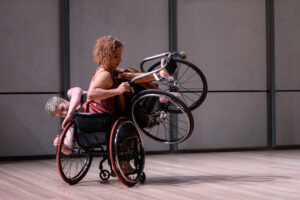
Laurel Lawson lays across Alice Sheppard’s lap as she pushes Alice’s left wheel rim with both hands. They wear shimmery costumes in autumnal tones as they spin in their wheelchairs. Photo by Filip Wolak / Whitney Museum of American Art.
Under Momentum struck me as the most concentrated and focused introduction to the work of the dancer/choreographers and the KL Ensemble that I might imagine. I rued the fact that the Dancing Matters group proved too early in its evolution to organize quickly enough to snag tickets before the show sold out. The piece provided a clinic in contemporary dance creation and performance at the highest level. Standing in the exit aisle at the right side of the audience, having been encouraged like everyone else to stand, sit or move around by the introductory hosts, I found myself able to maneuver consistently in such a way as to intently study every move and transition on the stage while keeping Israilov’s dance-like ASL interpretation of the musical score easily in view.
This simple accommodation freed the experience from a one-way presentation vibe and enabled a more interactive approach sans the stifling and in many cases unnecessary and even counterproductive regimens of most Western theatrical events. Its liberating and humanizing effect allowed a girlchild of perhaps five to seven years old to lie on the floor in a gap among the wheel and power chairs in a taped off area at the very front of the audience surrounded by coloring books that she never made use of in my observation, so fascinating did she find the goings on in front of her that, chin propped on her hands over bent elbows, she could almost have reached out to touch.
Lawson and Sheppard began the piece without their wheelchairs in a slowly unfolding and developing adagio duet atop one or two of the longest ramp elements turned on their side. They followed this section with a suite of other sections mostly involving dancing in and out of wheelchairs punctuated intermittently with blue tinted half-light reconfigurations of the set by a crew of stagehands.
The subtly shifting and affective lighting design by ensemble member Michael Maag came to the fore in these transitions, supporting mostly in silence/ambient sound an air of unfolding mystery that served as counterpoint to the excellent recorded score drawn from multiple composers and supplemented with a haptic experience design by Lawson and realized with the help of David Bobier and Jim Ruxton ofVibraFusion labs.
Over the course of the work’s 80-minute duration with intermission, I felt an increasing excitement as if Lawson and Sheppard had enabled me to re-live and reinterpret my own earliest, though later in life than most dancers, training in modern dance technique and composition. Here I found myself re experiencing side falls and lateral stretches, theme and variations and even balletic set pieces that I have been witnessing ever since I got into performative dancing and dance making.
Sequential solos for Sheppard and then Lawson featured some of the most amazing innovations and reimaginings I’ve seen performed in wheelchairs; extraordinary feats of invention and physical power. At one point in her solo Sheppard executes a series of side rolls on the floor in her wheelchair tracing a circle around the center of the stage: a terrestrial reinvention of the ring of airborne barrel turns so commonly performed in the male principal dancer and soloist variations of ballet.
Laurel Lawson lays across Alice Sheppard’s lap as she pushes Alice’s left wheel rim with both hands. They wear shimmery costumes in autumnal tones as they spin in their wheelchairs. Photo by Filip Wolak / Whitney Museum of American Art.
Every traditional dance iteration transforms itself in the bodies and minds of these two and their collaborators. This complements inventions and passages, such as what I will call the Sisyphean mirror duet, made possible only by utilizing the chairs and ramps.
Compositionally, the works’ structural rhythm, variation and even the pauses for set redeployment along with the sound score all add to more than the sum of the parts. The subtle and supple development of the onstage relationship between Lawson and Sheppard as both individuals and partners created an understated layer of dramatic intrigue. Oh, how I wish the Dancing Matters group could have experienced and discussed all this with me.
Dean Moss’ Your marks and surface
Dancespace Project, St. Marks Church in the Bowery, February 24, 2023
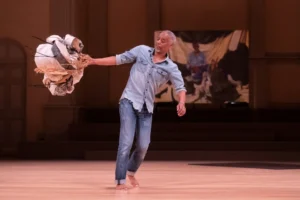
Dean Moss, a black man wearing blue jeans and a lighter blue chambray shirt, leans to his left to counterbalance a bundle of white cotton sailcloth with a dark grey reinforcing hem enbedded with grommets threaded with black tie lines all bound up by thicker beige ropes as he swings the bundle away from himself in his right hand. Behind him loom the sacristy steps of St. Marks Church atop which sits a large portrait of a seated Moss dressed in the same clothes painted by Angela Dufresne . Photo from Moss’ “Your marks and surface,” Danspace Project, 2023. Photo by Ian Douglas.
The doors to the nave at St. Marks opened as usual before a Danspace performance and the knot of audience that had formed in the vestibule began to shuffle in. On the right side toward the midst of the main space beyond them, I glimpsed a trim middle-aged black man barefoot in work clothes – a pair of blue jeans with folded up cuffs at the ankles topped by a blue chambray shirt, long sleeves rolled up to the elbows. He dragged over his left shoulder and behind him a large sack of gathered cotton sail cloth complete with grommets threaded through with both black cotton tie line and fraying loose ended jute, hemp or sisal halyards of the type traditionally used for jib and main sheets on large sailboats. The lumpy cargo enclosed within this sailcloth appeared to be almost as tall as the adult human hauling it and at least twice as wide. The effort and energy required looked to be considerable from the way his body leaned forward and his legs struggled to move its weight across the polished wooden floor.
This became for me only the first of what dance writer Siobhan Burke in her excellent New York Times review recalled as “So many potent images <that> linger in the aftermath of Dean Moss’s” largely solo work Your marks and surface. In the lively nine-person Dancing Matters discussion that followed the show, over cocktails and compote, borscht, pierogis, and other delicacies at the nearby Ukrainian East Village Restaurant inside the Ukrainian National Home, the idea of images that linger and that help frame and reframe the affect of a movement work came into play.
The initial reaction of most members of the group to this affect ranged from dismissive to puzzled with a side of irritation. In the course of an honest hour-long back and forth, however, evidence of a relatively intense level of engagement among members of a dance audience, albeit negative at the outset, seemed to emerge. Palpable pain as well as the indelibility of the images seemed to bracket the debate.
Full disclosure: I worked with Moss for 2 ½ years as part of his six-person onstage ensemble for Nameless forest over a decade ago. In the course of that experience, I read a description of him as a “slippery” cross discipline artist. He can certainly be challenging in a way that I find leans to the good. I remember his fellow multi-discipline artist Ralph Lemon, invited to an in-process iteration of that work, challenging friend and colleague Moss concerning Nameless forest, still without its defining finale sequence. It remained, in Lemon’s view, “not transgressive enough” in the way that he had come to expect from a Moss opus.
Part of the edginess of a Moss work over the last 20 years or so has involved the ingenious and constantly evolving way he has involved the audience within the corpus of the work itself. Burke notes this within her review by quoting theater artist Young Jean Lee’s characterization of her sometime collaborator Moss as “the expert in that field.” When Kinetic Light proved a ticketing bridge too far for Dancing Matters, I warily suggested Your marks and surface as a replacement, carefully noting Danspace’s caveats that the piece “contains mature content” and that voluntary “audience participation <might be> included.” I told anyone who asked that I had no idea what to expect.
In retrospect, although I wish we could have seen KL as a cohort and discussed Under Momentum in the relatively posh and conducive confines of the remade lobby of David Geffen Hall, I have no regrets about the way things worked out and where we ended up digesting. I feel rather pleased instead to have provided an introduction to the work of a prickly old friend to people I have mostly met lately. As an auspicious bonus, on a pre-show visit to the restaurant I had discovered that a milonga would be in progress through two pairs of open double doors in an adjacent space down a few steps from the Ukrainian dining room and, in true DanceFest fashion, social dancing would accompany our late dinner and discussion.
It came to pass that I alone among our group became an audience participant in Your marks and surface. I had already claimed what I considered the prime “escape and audience observation” perch in the end seat of the top row at the southwestern (narrow) end of the risers facing into the nave, having discovered that most of the audience would be arrayed along the long east southeastern wall approximately 45 feet to my right. Already enjoying the relative freedom of movement that this “escape seat” would afford me, I had begun to roam, greeting other performers and friends from Dean’s previous works, second and third cousins from his extended artistic family network.
I had noted that some of these cousins had been receiving a Moss escort around the now abandoned bundle resting almost directly in front of my seat near the southwest corner of the nave. I felt safe, however, from his attention until, while chatting with David Hamilton Thompson, I felt his hand on my shoulder inviting me into sojourn. This tour progressed as completely natural up to a point. We began chatting and laughing as old friends and Dean’s manner and interaction remained friendly and forgiving throughout except when his hand around my shoulder or waist gently but firmly reminded me to keep walking or seemed to tilt me slightly off balance on my feet.
This admonished me that Moss may prefer to keep almost everyone, audience and performers alike, just a little on edge. More than once during the making, run and touring of Nameless forest I had remarked that part of the challenge of preparing that work involved letting a good deal of what I had absorbed through my professional dance training fall away temporarily to keep everything as alive as possible within the relatively strict structural limitations of the set and Dean’s choreographic designs. It seemed that whenever a sequence began to approach something people might begin to recognize as “dance” Dean would twist or break its form to keep everyone alert and creatively uncomfortable.
This ethic extended to envelop not only we six performing among the fresh dozen or so folks at each performance whom we had seduced, cajoled, beguiled or otherwise convinced, to join us onstage and take part in they knew not what and about which we could only make a practiced and educated guess that we could not reliably share with them. These recruitments took place during the audience takes its seats interim corresponding to that of the Your marks and surface’s walkabouts. Like Moss in the latter piece, we would already be found onstage as the ticket holders entered the theater proper.
Upon my release from our walk and return to my seat, I came to believe that this might be the most intimate and effective way of greeting and welcoming old and new friends and colleagues at the top of a show that I had ever seen or experienced. The once-around-the-stage stroll had a way of taking into the creator’s confidence some of us who had become familiar with Moss’ process and proclivities, as well as others who perhaps might not. Unlike the house opening sequence of the Broadway show Once, which allowed the paying customers to climb onto the stage boards and order a pint from the working taps of the pub built as the stage set prior to the cell phone announcement and the dimming of the house lights, the auteur/performer and not the patron determined the protocol here. (I never noticed whether a ramp or other accommodation had been offered in the Once gambit, while here the single level from the vestibule to nave would obviate such a consideration.)
Siobhan Burke has more than adequately described a great deal of the rest of the proceedings and I prefer to leave any outstanding observations and other resonant thoughts to other members of the Dancing Matters cohort in the comments below. I invite and welcome your input with a couple of parting notes:
Our post performance discussion reinforced for me how much the perception and processing of any challenging aesthetic depends on one’s perspective and often preconception. “Do you consider this dance?” has become an oft repeated and not unwelcome question since the heady days of the Judson Dance Theatre and, I might speculate, perhaps for eons before then. For Your marks and surface this implicated quite literally my choice of seating.
Shooed back into my chair by the stern and watchful house manager, I found myself still situated ideally to be able to watch both the action and most of the audience for the duration of the proceedings. But from the unwrapping of the original bundle to reveal a sculptural serpentine pyramid shaped mound within, a mound that would much later itself be unwound to reveal a softly writhing red orange shag bag with a body inside, I did not, from my angle, perceive the bare foot sticking out from the mound in the direction of the bulk of the crowd and plainly visible to most of the rest of my DM companions. This allowed me to fantasize about the contents of the bag that appeared revealed under the chair that served as the armature for the mound-pyramid long enough to wonder, when first seeing it move, whether it might be a collection of Roomba tribble-like balls in spite of my awareness of the credited inclusion of the dancer Sawami Fukuoka as a performer in the piece far in advance of the show. I had even seen some of Moss’ posted video work with her leading up to this piece. Fool me twice, shame on me.
In a related exercise in perception, I took notes across the duration of the event of the kind that I have not taken since giving up my four year stint as a mostly summertime dance critic for a daily newspaper. I deployed this tool in preparation for the post-partum discussion that follows as a feature of every Dancing Matters adventure, still stung by the humiliating experience of trying to recollect from memory for an academic paper the sequence of Moss’ johnbrown (2014), his successor project to Nameless forest, and failing miserably in the attempt. Having learned from my newspaper days that I could barely if at all read any of the scribbles that I made in the dark or half-light while continuing to take in a dance work, I have pared down my notations to those of time by the clock and a word or three as memory aid to recall a precise progression.
This turned out to be superfluous for the most part in recalling the present piece whose striking images and (Ravel’s) Bolero-like sequencing remain so vivid at this writing. Yet the timings reveal such an intricate temporal structure as to rival those of theater director and sometimes choreographer Robert Wilson in their rigor and clarity. Here the potent images and sounds that Burke references in her review, spare as she says, yet pregnant with a raw resonance that Wilson’s striking, stylized, polished and highly technically produced spectacles often lack for me do indeed linger.
My Dancing Matters colleagues confirmed later that they too, as audience, consistently had time to collect impressions, process, and allow associations, images and experiences from their own lives to rise up within them even as the pace of Moss’ looping variations increased in physical force and seeming sense of impatience. I will share a few that persist for me and the context in which I conjured their resonance in a personal way:
- After unwrapping his bundle and exposing the sculptural pyramid mound, Moss wrestles his sailcloth around the stage to unfurl it across the floor with what had been its interior side facing the ceiling and sits on it with his legs splayed out near one end of its length. In the brief but stage-long stillness that follows, his figure calls to my mind that of the solitary sailor in Winslow Homer’s The Gulf Stream (1899).
- The black stripes in parallel lines that run the length of the sailcloth on which Moss sits reminded me of various versions of the American flag I have seen from Jasper Johns to Black and White to distressed. I have also seen a grayscale half close up photographic portrait of Moss as a child standing alone and saluting an in his face American flag with his right hand over his heart.
- The dragging of the sailcloth bundle, its heavy cotton unfurling, and the repeated regathering of it between his splayed legs as he sits; his repeated twisting of it and retying into a bundle that variously becomes a compacted burden carried on his back, on his head, as a kind of proto straitjacket around his body, finally as a centrifugal counterweight. Working all that cotton, the ropes, the exhausting repetitiousness of the tasks he seems to compel himself to complete in such deliberate fashion.
Art making has its Sisyphean aspect. Having finished a work, one descends the hill to begin another.
In a final sequence Moss asks matter-of-factly if anyone in the audience will help him. His repeated requests and our initial passive and silent response reminded me of an almost daily occurrence and encounter I have on the subway and sometimes on the street. On about the third try, several people in the audience respond and Moss, on this evening, selects a relatively young bearded white man from among those few who volunteer. As this stalwart naif enters the playing area, Moss begins to describe the ordeal that awaits the stranger involving being wrapped up and then dragged “for a looong time.” The young man walks back towards his seat. It turns out that he wants simply to unload his glasses and jacket before this undertaking.
Their interaction takes on a comic edge that seems unforced and evokes a glimmer of touching mutual vulnerability. Moss manages to keep it somewhat dark as he promises to leave his volunteer in that state without light and disappear. The ordeal turns out to be much more mercifully gentle and brief than threatened. Still we sit as witnesses while an older black man in 2023 drags a younger white man around in his sailcloth while a shrouded figure in red orange shag struggles to its feet from under a chair. Moss, having left the young man as he warned, lifts the figure, cradling the phantom in his arms as he disappears through the door toward the parish hall at the northeast corner of the nave and closes the portal behind them. Stephen Vitiello’s magical intermittent recorded score has disappeared one final time.
The denouement as in other Moss works, has a decidedly ambiguous tone and leaves the audience confused as to how to respond. As promised, we have been left in the dark, abandoned with no applause cue and no return of the credited performers. From where I sit, Angela Dufresne’s painted portrait of a seated Moss in costume with hanging black and white striped linen behind and surrounding his image stares back at me from its easel atop the raised sacristy area at the far end of the nave from me and adjacent to the door that Moss carrying Fukuoka have just exited. It looms over the wrapped figure of our intrepid but hapless volunteer seated in his cocoon on the polished wooden floor. As Carol Mullins’ stage lighting fades and stays down an awkward silence engulfs the darkened room broken by tentative and dispirited applause. I turn to a DM colleague in the adjacent seat in the dark and whisper, “But he told us all what he was gonna do.”
- Publicado en 2023, El baile importa
Dance Parade Política de salud y seguridad COVID-19

Warning: COVID-19 is an extremely contagious disease that can lead to severe illness and death. There is an inherent and elevated risk of exposure to COVID-19 in any public place or place where people are present and there is no guarantee, expressed or implied, that those attending a Dance Parade event will not be exposed to COVID-19. As per current Federal Center for Disease and Control recommendations, we recommend (but do not require) all participants over the age of five to be fully vaccinated in order to attend our events.
Continuaremos monitoreando el impacto de la pandemia de COVID-19 en la salud y trabajando con las agencias municipales, estatales y federales para ajustar esta política según sea necesario.
Dear Dancer,
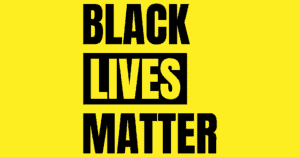
|
On behalf of the Dance Parade Board, Steering Committee and the broader dance community we serve, I convey our deepest condolences to the families of George Floyd, Ahmaud Arbery, Breonna Taylor, Tony McDadde, Christian Cooper, David McAtee and countless other victims of injustice everywhere.
Dance Parade plays a critical role condemning racial injustice and hate. By presenting as many cultural dances as possible, our work seeks to advance cultural equity, celebrate diversity and inclusion for all people — not just those who are privileged by structural inequities or the color of their skin.
As we recognize #BlackOutTuesday today please take a moment to educate yourself on these issues and consider supporting one or more of the non-profit organizations below who are fighting to change the structural racism that surrounds us.
In solidarity,
Greg Miller
Director Ejecutivo
NAACP Legal Defense and Education Fund is the country’s top legal firm fighting for racial justice. Through litigation, advocacy, and public education, it seeks structural changes to expand democracy, eliminate disparities, and achieve justice for all. It also defends the gains and protections won over the past 75 years of civil rights struggle.
Poor People’s Campaign confronts the interlocking evils of systemic racism, poverty, and militarism. As a nation we are at a critical juncture — and we need a movement led by working people that will shift the moral narrative, impact policies and elections at every level of government, and build lasting power for poor and impacted people.
Color of Change is the nation’s largest online racial justice organization that helps people respond effectively to injustice in the world around us. As a national online force driven by 1.7 million members, they move decision-makers in corporations and government to create a more human and less hostile world for Black people in America.
The Citizenship Education Fund, founded by the Rev. Jesse Jackson, is working to protect, defend and gain civil rights by leveling the economic and educational playing fields while promoting peace and justice around the world. It is a multi-racial, multi-issue, progressive organization that is dedicated to improving the lives of all people by serving as a voice for the voiceless.
Mijente is a national hub for Latinx and Chincanx organizing that advocates on behalf of those communities as well as other oppressed communities. It has been leading the charge within Spanish language media, attempting to bring awareness and solidarity with Black-led protests and organizations. It serves as a link between many Black-led organizations and Spanish-speaking communities, participating and leading in solidarity actions in several states.
The Bail Project is a national nonprofit organization that pays bail for people in need, reuniting families and restoring the presumption of innocence. In fighting mass incarceration, they aim to secure freedom for as many people as possible and ensure equal justice for all.
These groups are doing important work in communities all across the country, and now more than ever they are counting on our support.
|
|
#TheShowMustBePaused #BlackOutTuesday #BlackLivesMatter
#DanceWithoutBorders #DanceParadeNYC
Dance Parade is a 501(c)3 Non-Profit Organization
|
- Publicado en 2020
The importance of dancing like an Idiot
On Saturday May 16th the 14th Annual Dance Parade and Festival goes Virtual! Dance Parade is for everyone and now it’s accessible everywhere.
Join thousands of professional dancers and plain ‘ol dance moms, kids, teens and older adults as we boogie down to DJs. Register for the FREE virtual parade here.
We love the values of this video, “The Importance of Dancing Like an Idiot!” and we hope you will too!
- Publicado en 2020, Genre Buzz

